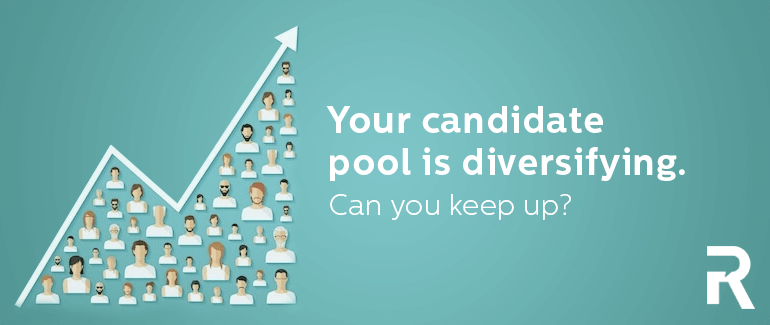
The workplace climate is rapidly changing. Baby boomers are staying in their jobs longer while more millennials are entering the workforce each day. As one would imagine, this is creating a unique and somewhat unprecedented situation for employers. It should come to no surprise that reaching them all using the same methods and messages is not going to draw in the candidates you want. That’s why we’ve broken down what’s happening with today’s workforce and determined a few ways to stay on top of these differences, all starting with your hiring.
For the most part, we’ve seen this diversification coming. Unlike the weather, forecasts for working-age population are relatively measurable and predictable. It all comes down to the numbers, and quite frankly the birth rate. Calculated Risk reports that since bottoming out in 2012, the prime working age in the United States has begun to grow and is now close to .5 percent growth per year. The meaning of this is relatively clear, the working age is slowly growing as more enter the workforce. What makes this even more interesting is what is happening simultaneously amongst other working generations.
For years, we have been increasingly concerned with Baby Boomers, the backbone of the American workforce for decades, moving into retirement. But with the economic times, many Boomers are staying in the workplace longer than they have historically. In fact, last year Gallup reported the average age of actual retirement grew from 59 to 62 from 2002-2014. This is attributed to financial hardship created during the Great Recession and reluctance to exit the workforce.
Additionally, we are seeing the Millennial generation, also known as Gen Y or “Echo Boomers” begin to move in, a large factor in the current increased growth rate. In May of 2015, Pew Research reported Millennials now contribute 53.5 million workers to the U.S. economy, with Boomers at 44.6 million and Gen Xers at 52.7 million.
This obviously affects the workforce at a high level, but it’s also changing your hiring needs and methods. Here are some ways you can stay on top of the changing work climate:
1. Make sure you are writing job postings in the right language- and in the right places. With larger numbers of diverse workers, specificity is key in finding the talent you need.
2. Optimize your career site. Candidates of all ages have shifted to researching your company via your career site and outdated pages can be an instant turnoff. By updating your page you’re showcasing not only that your company is up with the times but also clearly communicating why someone should work for you, something people of all generations appreciate.
3. Make a game plan. Decide with your team the ideal candidates for your open or soon-to-be-open positions. From there, be sure that the job posting is accurate, you’re posting in the right places, and that your career site and other hiring publications reflect your company’s employment brand.